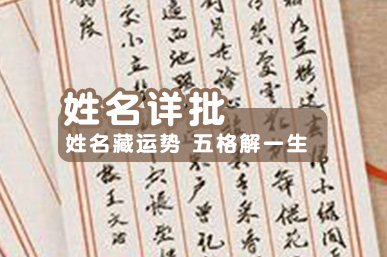

你在哪天过“小年”?知道这些习俗吗?
中国民间传统的祭灶日“小年(Little New Year/Minor New Year)”来到了。
这一天人们通常通过祭灶和扫年来宣告整个春节庆祝活动的开始。也有日历将腊月廿三和廿四都标注为小年,原因在于南北方的小年会相差一天,北方多数人廿三过小年,而南方人的小年则要晚一天。你们那里哪天过小年?
下面是“小年”的六种民间习俗,“小年”也预示着春季的开始。
1. Offer sacrifices to Kitchen God 祭灶王
In one of the most distinctive traditions of the Little New Year is the burning of a paper image of the Kitchen God, dispatching the god's spirit to Heaven to report on the family's conduct over the past year. The Kitchen God is then welcomed back by to the home through the pasting of a new paper image of him beside the stove. From this vantage point, the Kitchen God will oversee and protect the household for another year. “小年”最具特色的风俗就是“祭灶王”,具体来讲就是将旧的灶王像烧掉,送“灶王”上天禀报这家人过去一年的善恶。大年三十的晚上,要在灶台旁贴一张新的灶王像,也就是“接灶”。这样,来年“灶王爷”就能继续监督并庇佑这一家人。
Most of the offerings are sweets of various varieties. It is thought that this will seal the Kitchen God's mouth and encourage him to only say good things about the family when he ascends to heaven to make his report. 人们还会在祭灶时给灶王爷摆上多种甜点做贡品,认为这会堵住灶王爷的嘴,让他上天汇报时只说好话。
2. House cleaning 扫尘土
Between Laba Festival, on the eighth day of the last lunar month, and Little New Year, on the twenty-third day, families throughout China undertake a thorough house cleaning, sweeping out the old in preparation for the New Year. 从腊八到小年这段时间,中国大部分家庭都会彻底清扫房屋,“辞旧迎新”。
According to Chinese folk beliefs, during the last month of the year ghosts and deities must choose either to return to Heaven or to stay on Earth. It is believed that in order to ensure the ghosts and deities' timely departure people must thoroughly clean both their persons and their dwellings, down to every last drawer and cupboard. 根据中国民间习俗,鬼魂和神灵都要在腊月选择返回天上还是留在人间。为了保证“他们”及时离开,人们必须彻底进行清扫,包括个人卫生和住所,抽屉和碗柜的犄角旮旯也都要打扫干净。
3. Eat Guandong candy 吃关东糖
Guandong candy, a sticky treat made out of glutinous millet and sprouted wheat, is a traditional snack that Chinese people eat on the Festival of the Kitchen God. 关东糖是用麦芽、小米熬制而成,是人们在小年吃的传统小吃。
4. Paste paper-cuts to windows 贴窗花
In the Little New Year, old couplets and paper-cuts from the previous Spring Festival are taken down, and new window decorations, New Year's posters, and auspicious decorations are pasted up. 过小年时,要把去年春节贴的春联和窗花取下,贴上新的窗花,年画,和各种大吉大利的装饰品。
5. Bath and hair-cut 沐浴理发
As the old Chinese saying goes, whether they're rich or poor, people often have a haircut before the Spring Festival. The activity of taking bath and haircut is often taken on the Little New Year. 民间有“有钱没钱,剃头过年”的说法。“小年”时人们常要沐浴理发。
6. Preparations for Spring Festival
办年货
File photo shows people do special purchases for the Spring Festival. [Photo by Liu Mingxiang/Asianewsphoto]
People start to stock up necessary provisions for the Spring Festival since the Little New Year. Everything needed to make offerings to the ancestors, entertain guests, and feed the family over the long holiday must be purchased in advance. 从小年开始,人们就要为过年置办了,包括给祖先的贡品、招待客人的用品,还有过年期间一家人的吃食都要提前买好。
(中国日报网英语点津 yaning)
来源:中国日报网
腊八遇上大寒,要过年啦
1月20日,腊月初八
迎来传统节日腊八节,俗称“腊八”
巧合的是
这一天还是“大寒”节气的开始
“大寒年年有,不在三九在四九。”《中国天文年历》显示,北京时间1月20日4时40分将迎来“大寒”节气,恰值“四九”第四天。此时节,天气虽然依旧寒冷,但“严冬腊月尽,又是一年好春时”。
历史学者、天津社科院研究员罗澍伟介绍说,每年公历1月20日左右为“大寒”,它是二十四节气中最后一个节气,也是冬季最后一个节气。同“小寒”一样,“大寒”还是表示天气寒冷程度的节气。此时节,常出现大风降温或降雪,朔风独啸,蜡树银山,“寒气逆极”,故谓“大寒”。
据古籍《月令七十二候集解》记载,大寒有三个候应,分别是初候鸡始乳、二候征鸟厉疾和三候水泽腹坚。寥寥数语,便将古人认为最能代表大寒节气的自然现象一一道出。
严寒是“大寒”时节的特点,但物极必反,过了“大寒”就是“立春”。
罗澍伟提醒,“大寒”时节,人体继续受寒冷环境影响,仍要顺应自然规律,坚持防寒保暖,避免风寒二邪的侵袭。起居方面,早睡养阳,晚起护阴,藏神志于内,以增强免疫功能。同时适当进行户外锻炼,排解不良情绪,睡前热水浴足,注意随气温变化增减衣着。进补则应逐渐减少,可依体质特点,选用清淡润燥或升散性食物,如莲藕、萝卜等,以适应即将到来的春季“升发”的气候特点。
民俗专家表示,“腊八”巧遇“大寒”比较罕见,在寒冷的“四九天”,喝上一碗飘香的腊八粥,会别有一番滋味。
“腊八粥,喝几天,哩哩啦啦二十三。”腊八一过,紧接便是小年,年味儿一天浓似一天。
自腊八至除夕,人们在这二十多天里除旧尘、理头发、添新衣、蒸馒头等,井井有条地“忙年”,为迎接新春佳节做足准备。
腊八来了,春节的脚步近了
当凛冽的寒冬遇上温暖的腊八
喝碗热粥,注意保暖哦!
来源:综合人民网、新华社、人民日报
来源: 郑州人民广播电台


















